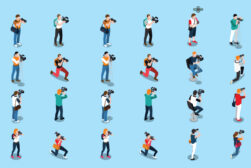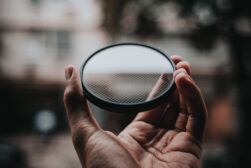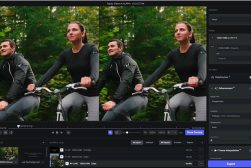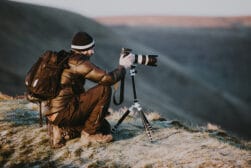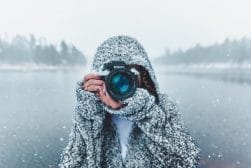
7 Essential Camera Movements (+ Playable Video Examples)
Dolly, truck, pan, tilt... This guide breaks down the seven key camera movements you need to know for engaging filmmaking and photography.
By Ana Mireles
Do you know how to use camera movements in your films and videos?
Understanding the types of camera movement, you can do in your shots helps the viewer engage with the story.
In this article, you’ll find everything you need to know to improve your storytelling skills.
You’ll find tons of camera movements to choose the most effective one for what you’re trying to say to your viewers.
This doesn’t mean that you shouldn’t use a static camera shot, of course.
Rather, you should use camera movements when it’s the best way to communicate the message or establish a specific mood.
Ultimately, it’s all about making conscious decisions that will make you a great film or video maker.
What are camera movements used for?
There are many tools and techniques you can use in visual storytelling.
Some have to do with the viewer’s perspective, such as doing an aerial shot to give a bird’s eye view of the scene.
Others imply adjusting the settings. For example, changing the focal point between two characters to pass the emphasis from one to the other. This is known as a rack focus.
Camera movements are a filmmaking technique that allow you to tell a story better. You can direct the viewer’s attention using the right camera movement and even create an emotional response.
For example, you can use a dolly zoom to create a sense of impending danger.
You can also use camera movements to make your film more dynamic and engaging. It’s important that you make a shot list when you’re planning. This way, you’ll know what equipment you’ll need.
It will also help you to organize the order of the shots and keep track of what’s been done and what you still need to shoot.
What Are the 7 Types of Camera Movements in Cinematography?
These are the basic camera movements you need to know for visual storytelling.
Dolly camera movement
A dolly is a cart that moves on rail tracks often used in filmmaking. A dolly movement is when you mount the camera in a dolly track to get a smooth motion.
You can be shooting an object, a character, or a location. The dolly shot helps you to move towards or away from it on a fluid motion track.
When you’re moving towards something, it’s called a dolly in. If you’re moving away from it, it’s called a dolly out.
You can combine the dolly movement with other techniques, for example, a zoom shot. This combination is called a dolly zoom.
One of the most famous examples of a dolly zoom is the one used by Alfred Hitchcock in Vertigo. That’s why it’s also known as the Vertigo effect.
You may also combine a dolly shot with other camera movements.
Truck camera movement
The truck camera movement is similar to the dolly one but follows the opposite direction.
Trucking involves moving the entire camera from left to right or right to left.
The truck shot lets you keep the same distance from the subject as the camera moves. It’s often used to follow a character.
Tracking camera movement
Both the dolly and the truck shot can be tracking camera movements when they’re done following a subject. However, they aren’t the only two movements considered tracking shots.
The arc shot is also known as the 360 tracking shot. This is because the entire camera moves around the subject.
Another camera technique to track a character is to follow them with an aerial shot using a drone.
Pan camera movement
A pan shot is when the camera pivots on its horizontal axis. In other words, the camera remains at a fixed point.
The thing that changes is the direction of the shot. With a horizontal movement, you capture the scene from left to right or right to left.
The pan camera movement is often used for establishing shots because it gives you an overview of the scenery.
It’s also helpful to track a moving subject while keeping the camera mounted in place.
Tilt camera movement
A tilt shot is like a pan shot, except it’s a vertical movement. So, the camera tilts up or down without physically moving from its place.
Just like panning, tilting is useful when you do an establishing shot.
For example, if you start the shot at the entrance of a building and tilt the camera up until you reach the top of the building.
If the next shot happens inside an apartment, the viewer will know that such an apartment is on the top floor of that building.
Another common use for titling is to disclose a character. You put the camera at a lower angle to start the shot at their feet, then tilt until you reach the face to reveal their identity.
Pedestal camera movement
The pedestal shot is a vertical camera movement. To do this, you need to raise or lower the entire camera. You can also refer to it as ‘pedding’ the camera.
This camera movement is done with a pedestal – hence the name. This provides the required stability, although it’s an expensive piece of equipment.
For a low-budget pedestal shot, you can use the elevator column of the tripod to move the camera up or down as you shoot.
Zoom camera movement
In a zoom shot, the camera remains stationary; what changes is the focal length.
There is, however, a camera movement called the dolly zoom. In it, the camera moves on the dolly while the camera operator is simultaneously zooming with the lens.
What are In-Camera Transitions?
Transitions are tools that help you pass from one frame to another. They are essential because they determine the flow of the story.
You can make transitions in post-production. Some of the most used are the fade-in and fade-out, the blur, or the swipe.
In-camera transitions are the techniques used by the camera operator to switch from one scene to the next with camera movements. For example, the whip pan.
Whip pans are nothing else than a quick pan. You can use a whip pan to go off-screen and do it again to get back into a new scene.
This way, you can change locations or scenery using the blur from the whip pans to make the transition.
How do you get smooth camera movements?
The best way to get a smooth camera movement is by using camera rigs. There are all sorts of support systems that help you to keep your camera stable.
For a static shot, you can simply use a tripod. However, for camera movements, you’ll need something more versatile.
It can be as simple as an adjustable tripod with a tripod head or as sophisticated as a crane.
Of course, there are ways to do elaborate camera movements with more budget-friendly options. For example, a crane shot used to be very expensive. Now, you can do a similar shot using a drone.
There’s also specific equipment that helps you to make stable handheld camera movement.
Using a gimbal or stabilizer, you can do a handheld tracking shot running after the character. You can also do handheld static shots using a shoulder mount.
You can also find all sorts of hacks to smooth camera movement without equipment. For example, you can do a smooth tracking shot by mounting your camera on a skateboard.
Of course, hacks limit the types of camera movements you can achieve. However, they will allow you to have more dynamic camera shots if you don’t have enough budget.
Camera Movements in Photography
While filmmaking has multiple frames to capture movement, photography has to do it in a single frame.
That’s why the techniques to capture and communicate motion in photography are different.
We’ve already discussed the most important types of camera movements in video and film.
Now, let’s talk about the use of movement in photography.
How do you use movement in photography?
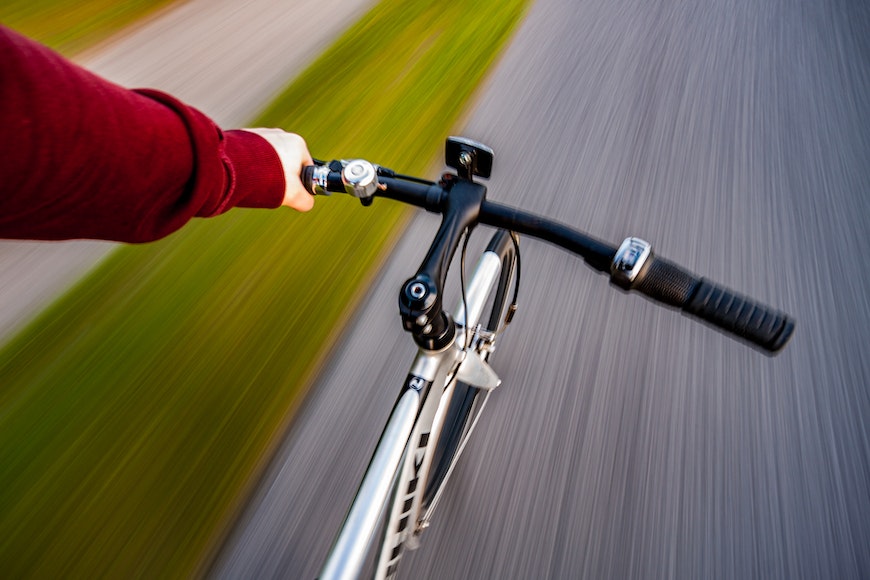
Credit: Daniel Nielsen
Whenever you want to use movement in photography, you have three choices.
1. A static shot of a moving subject.
When you have a moving subject in photography, you must consider the shutter speed.
A fast shutter speed allows you to freeze motion in photography. Instead, when you’re using a slow shutter speed, the camera registers the trail of the moving subject.
This effect is known as motion blur.
2. The camera movement when capturing a static subject.
There aren’t many types of camera movements that work in this situation.
The only thing that you can do to communicate motion on a static subject is zoom shots.
Simply use a slower shutter speed and turn the zoom while you expose the photograph. This technique is called zoom burst.
3. Both the subject and the camera are moving.
All tracking types of camera movement work in this situation.
You can pan or tilt the camera, move the camera upward or downward, or even mount it on a motorized vehicle.
For example, you can capture a moving car from a second car. You have to be very careful if you do this to avoid any accidents.
How do you use camera panning for photography?

Credit: Thgusstavo Santana
Camera panning in photography is similar to how you do it in filmmaking. You use it when you want to do tracking shots of a subject passing in front of the camera.
You can do a handheld shot or use a tripod for more stability. Either way, the camera needs to rotate on a fixed point from left to right or vice-versa.
The tricky part about panning in photography is that you need to match the speed of the moving subject while you rotate the camera. Remember to keep a wide shot and a slow shutter speed.
You may need a lot of practice before you master the panning technique to track subjects. It’s also handy to use a monopod which can rotate on a single axis.
Recently it’s become trendy to use panning to capture abstract landscapes.
This is less complicated because you don’t have to match the speed of an external object. It’s just a matter of finding the shutter speed and the movement speed that gives you the desired result.


Check out these 8 essential tools to help you succeed as a professional photographer.
Includes limited-time discounts.





